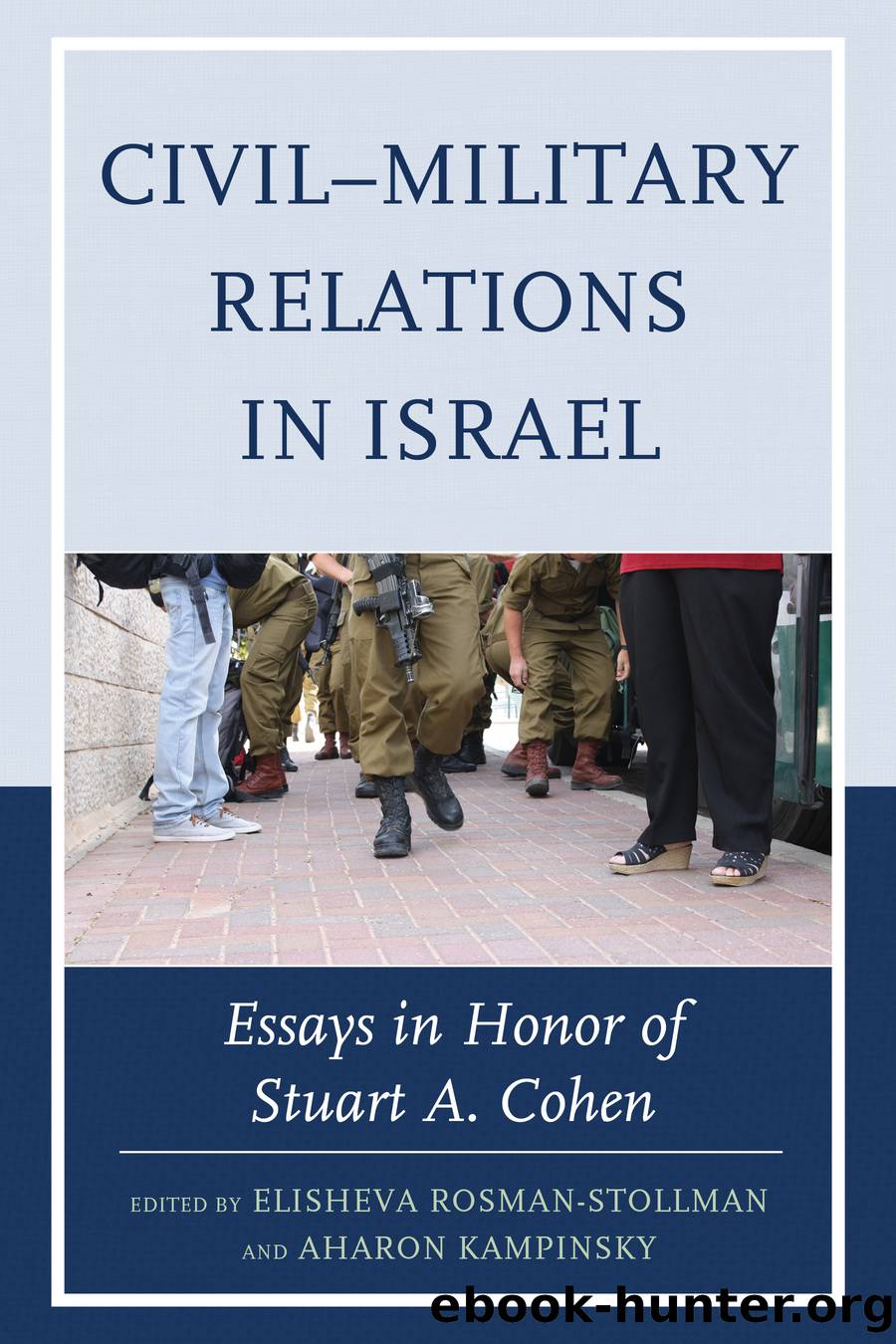CivilâMilitary Relations in Israel by unknow

Author:unknow
Language: eng
Format: epub
Tags: undefined
Publisher: Lexington Books
Published: 2012-08-15T00:00:00+00:00
From Total Institutions to Greedy Institutions to Hierarchically Greedy Institutions: Theoretical Background
Lewis Coserâs (1974) idea of greedy institutions relies on Ervin Goffmanâs theory of total institutions (1961). According to Goffman, the total institution is characterized by a large number of individuals, who find themselves in the same condition, cut off from general society for a substantial amount of time carrying on a daily routine that is closed and dictated from above. Goffmanâs work focuses on mental asylums, but the typology he suggests is also relevant for institutions such as army barracks and religious orders, including monastery monks. Like total institutions, greedy institutions, albeit to a lesser degree, also expect those who are part of it to evince unconditional loyalty. This obligation is so powerful that it deters belonging simultaneously to other institutional frameworks. It may even mandate breaking ties with competing institutions (Coser, 1974: 4â8).
As shown by previous studies (Rosman-Stollman, 2005), both greedy institutions and total institutions are rather opaque and imprecise concepts as presented by Goffman and Coser. Additionally, Coser assumes that there is minimal competition between a greedy institution and other social frameworks. He claims that by dint of the very definition of the greedy institution as based upon unconditional loyaltyâto the point of severing ties with competing institutionsâthe individual is not meant to suffer from conflicting motives and loyalties. In effect, Coser does not recognize the possibility of a parallel and concurrent belonging to two demanding institutions. Nevertheless, modern society does indeed recognize such dual loyalties. For example, in the 1980s, Wechsler-Segal (1986) pointed to parallel membership as an obvious phenomenon; family loyalty is one clear example of a demanding institution that competes for loyalty. As opposed to Coser, who does not seem to allow for such a loyalty split, other studies offer the concept of the âmediating structureâ as a means by which it becomes possible to simultaneously belong to two demanding institutions.
Originally coined by Berger and Neuhaus (1996), mediating structures are any institution that stands between the individualâs life and the larger institutions of public life. It regulates the pressures exerted on individuals, protects them from the possible tyranny of the public superstructure and, in effect, empowers the individual against the state. In its reinterpretation by Rosman-Stollman (2005), the application of the concept of a mediating structure not only as one that intercedes between the individual and the larger public institution âbut also as mediating between large public institutions themselvesâ (Rosman-Stollman, 2005: 66â67). Such mediating structures permit the decrease, even the resolution, of the potential confrontation between two demanding systems such as religion and the military. Case studies in point are institutions such as hesder yeshivot, the Union of the hesder yeshivot and the preparatory per-service seminars (mekhinot kdam tzvaiot).
That said, there are limits to mediation and there may be different degrees of demand in religious and military institutions. As demonstrated in preceding scholarship, different individuals may feel a varying degree of demand (Rosman-Stollman, 2005) and at times it is religious mediating institutions that contribute to demands rather than diffuse them (S.
Download
This site does not store any files on its server. We only index and link to content provided by other sites. Please contact the content providers to delete copyright contents if any and email us, we'll remove relevant links or contents immediately.
The Rule of Law by Bingham Tom(1318)
Philosophy of law a very short introduction by Raymond Wacks(1297)
Constitutional Theory by Carl Schmitt(1035)
The Quest for Cosmic Justice by Thomas Sowell(989)
A Matter of Interpretation by Antonin Scalia(940)
Hiding from Humanity: Disgust, Shame, and the Law by Martha C. Nussbaum(882)
The Law by Frederic Bastiat(857)
Philosophy of Law - A Very Short Introduction by Raymond Wacks(851)
Dignity, Rank, and Rights by Jeremy Waldron & Meir Dan-Cohen(801)
Superbia 2 by Bernard Schaffer(799)
The Sovereignty of Human Rights by Macklem Patrick(793)
An Introduction to the Principles of Morals and Legislation by Jeremy Bentham(788)
The Ages of American Law by Grant Gilmore(785)
An Introduction to the Philosophy of Law by Roscoe Pound(780)
Emotional Dynamics of Law and Legal Discourse by Heather Conway John Stannard(772)
The Law by Frédéric Bastiat(754)
Zagrebelsky, Gustavo by La legge e la sua giustizia(729)
Superbia (Book 3) by Schaffer Bernard(717)
Superbia (Book 2) by Schaffer Bernard(711)
